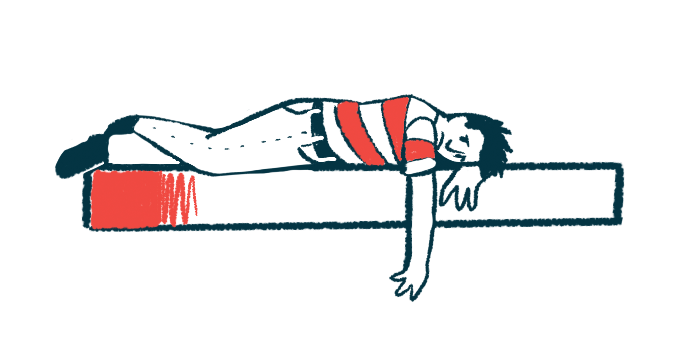Depression and Anxiety ‘Alarmingly’ High in PH Patients, Study Finds

Depression and anxiety are common in people with pulmonary hypertension (PH), especially for those living in Asia, a review of 24 studies involving 2,161 participants has found.
Researchers noted that “increased awareness amongst physicians regarding the vulnerability of PH patients to psychiatric conditions is key,” and that the “findings emphasize the need for screening and management of these conditions,” they wrote.
The study, “Prevalence, Risk Factors and Intervention for Depression and Anxiety in Pulmonary Hypertension: A Systematic Review and Meta-analysis,” was published in Frontiers in Medicine.
PH is a lung disease in which the blood pressure in the lung’s blood vessels, or pulmonary arteries, is abnormally high. As a result of blood vessels becoming damaged or narrower, the heart needs to works harder to pump blood through the lungs, causing it to become weaker over time. Symptoms of PH include breathlessness, fatigue, and fainting.
Some studies have reported that people with PH often experience depression and anxiety. High treatment costs, uncertain disease course, as well as a decline in the ability to perform daily activities can contribute to symptoms of depression.
However, the prevalence of depression among people with PH, and the prevalence according to the type of PH, still needs to be clarified, the researchers said, noting that the European Society of Cardiology/European Respiratory Society guidelines recommend psychological support for patients with pulmonary arterial hypertension (PAH), a form of PH.
Researchers in Singapore conducted a meta-analysis to determine the frequency and risk factors for anxiety and depression in patients with different forms of PH, including congenital heart disease-related pulmonary arterial hypertension (PAH-CHD) and chronic thromboembolic pulmonary hypertension (CTEPH).
A meta-analysis combines and analyzes data from several published studies. Databases were searched for relevant published research articles using words such as “pulmonary hypertension,” “depression,” and “anxiety,” from their inception to May 2021. A total of 24 studies involving 2,161 PH participants were included in the analysis.
“This systematic review and meta-analysis will be the first, to the best of our knowledge, to examine the prevalence, risk factors, and interventions for depression and anxiety in patients with PH, especially PAH and CTEPH,” the researchers wrote.
The prevalence of depression was found to be 28% in those with PH, 25.6% in PAH-only, and 24.1% in CTEPH-only groups. The prevalence of anxiety was 37.1% in PH, and 31.5% in PAH-only groups. Researchers noted that the data on anxiety in people with CTEPH was unsatisfactory for a proper analysis.
The researchers also compared the frequency of depression and anxiety in PH patients living in different geographical locations. Anxiety in patients with PH was more frequent in Asia (61.1%) compared to Europe (40.3%) and North America (22.9%). No differences were observed between middle- and high-income countries.
Additionally, no differences were found between the prevalence of depression in people with PH in different locations or between middle- and high-income countries.
The researchers estimated that the odds of having depression were 1.68 times higher in people with PAH-CHD, and 1.18 times greater in those with CTEPH. Likewise, anxiety was 1.63 times more likely to occur in PAH-CHD patients.
The findings revealed that having worse pulmonary vascular resistance, a measure of the resistance to blood flow in the lung arteries, and cardiac index (a marker of heart function) were significantly associated with anxiety.
No link was found between age, ethnicity, gender, or functional status and depression or anxiety in PH patients in the study.
“The risk of developing depression and anxiety in PH patients does not discriminate between age, gender, ethnicity, and socioeconomic status,” the researchers wrote.
Overall, “the global prevalence of anxiety and depression in PH patients is alarmingly high, with an increased prevalence of anxiety in Asia compared to Europe or North America,” the researchers said, noting that this conclusion was opposite other “epidemiologic studies, which revealed a lower prevalence of anxiety in Asian societies.”
The researchers noted that three of the studies examined interventions for managing depression and anxiety in PH patients, and found that techniques such as muscle relaxation and respiration therapy could significantly reduce symptoms.
“Psychological support is warranted for patients with PH, particularly at-risk patients with underlying PAH-CHD, CTEPH, and severe PH disease,” they added.
The researchers acknowledged their study had limitations, including that only four of the 24 studies were conducted in Asia, meaning that Asian PH patients could be underrepresented in the meta-analysis. There was also not enough available data on the use of the antidepressants and anti-anxiety medications that could help protect against depression and anxiety.
“Further research is also needed to examine causation and the relationship between PH and psychological adversity, the researchers noted.”







